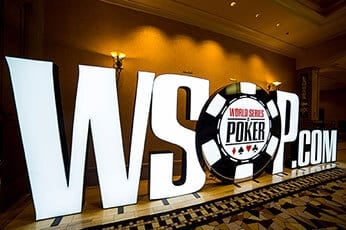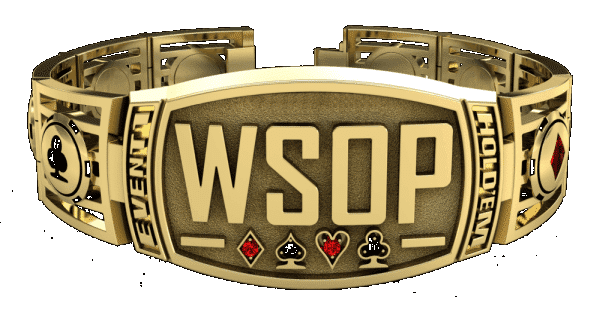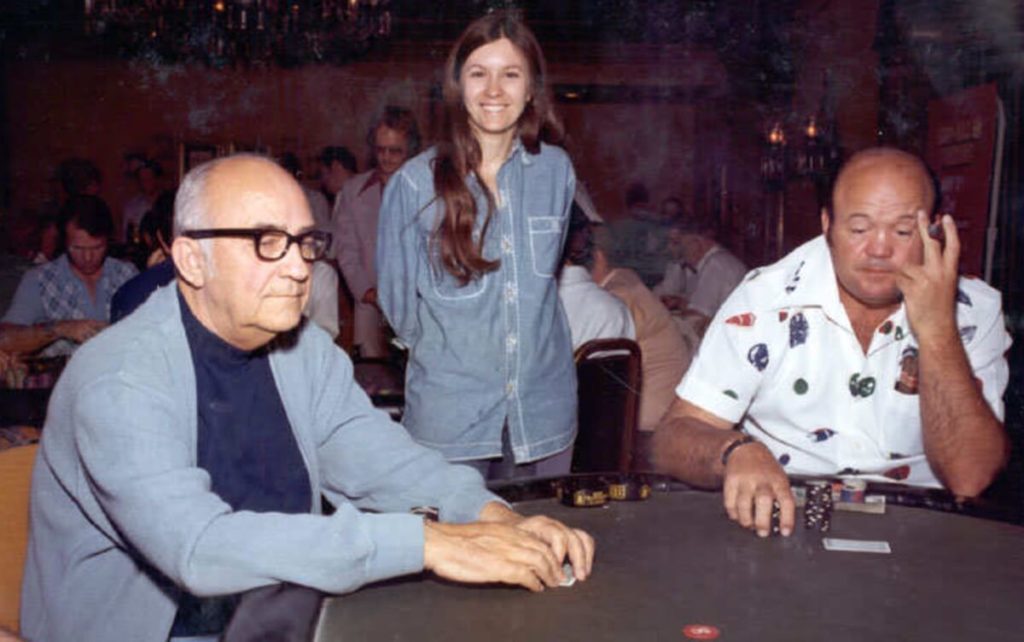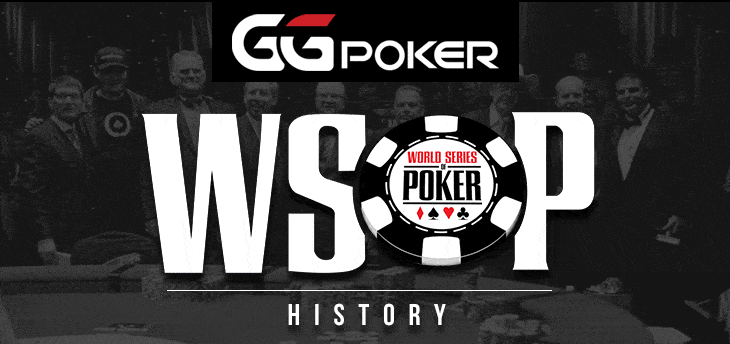The Story of the 1974 WSOP Main Event
In 1974, the stakes were higher than ever before in the World Series of Poker. Across one week in early May, dreams were made and shattered as Johnny Moss, The Grand Old Man of Poker won his third world championship in the first five years of Benny Binion’s magical creation. The WSOP offered five other events, one of which was retired forever and a controversial character returned to the winner’s circle in dramatic fashion.
Boyd is Four and Out in Five Card Stud
With the crowd even bigger in 1974 than the previous years, there were five preliminary events that took place before the Main Event. The first of them was the $10,000-entry Limit Seven-Card Stud event and, in a move that changed the future of poker tournaments, more than one prize was paid out.
In the years leading up to 1974, each WSOP event was primarily a ‘Winner Takes All’ situation. With nine entries in the first event of 1974, the top three places were paid. Earning a ‘min-cash’ for the first time was Syd Wyman, with the first of his two lifetime ranking cashes earned $14,625. Heads-up, Johnny Moss looked like the favorite but lost to Jimmy Casella, meaning the ebullient winner finally had a title and took home the $41,225 top prize.
Casella wasn’t finished there. In the second event of the WSOP, an incredible 36 players put up the money to play the $1,000 buy-in Razz event. Only two places were paid, however, as Casella beat Charlie Hall heads-up to claim the $25,000 top prize. Hall earned $11,000 for his runner-up finish.
The last time a five-card stud WSOP event ever took place was 1974 and it was won by the only person in history to ever win a bracelet in this format, Bill Boyd. The $5,000-entry tournament was the fourth time Boyd won a WSOP Event… and his last. Boyd never won another WSOP tournament in his career as five-card stud events became a thing of the past.

Sailing Home to Victory
In the fourth preliminary event, Brian ‘Sailor’ Roberts finished atop 16 entries, coincidentally the same number of entries the Main Event would gather later that week. Roberts, who served in the U.S. Navy during the Korean War, was a rounder who traveled the United States with Doyle Brunson and ‘Amarillo Slim’ Preston. He was also a well-known Bridge player, but poker was his main game. He won $35,850 and a WSOP bracelet when he defeated Larry Perkins heads-up.
In the fifth and final preliminary event, ‘Amarillo’ Slim won the $1,000-entry No Limit Hold’em event which had 21 entries. Slim’s win for $11,100 was earned after he beat Pete Kay heads-up for the title, with Ironman Smith finishing third for $1,800.
Also notable in that event was the performance of Bonnie Baez, who became the first-ever female player to cash in an open event at the World Series of Poker. Her fourth-place finish was worth $1,050 – just $50 more than the buy-in – but the significance of the achievement cannot be underestimated. Until that point, the game of poker was dominated entirely by male players. Baez’ result became the first in a long line of female firsts and achievements in the WSOP.

The Biggest Main Event Yet
“I’m not going to play in tournaments no more. Never. I’m too old.” The Grand Old Man of Poker said. Just 12 months on, Moss was back at the felt and in the Main Event. Now 68 years old, Moss had more players than ever to beat in order to win a third world championship.
All the usual suspects were in place and following on from a final table appearance in 1973, Bob Hooks again ran deep, this time crashing out in sixth place from the 16 total runners. He was followed from the felt by Sid Wyman, who followed up his deep run in the opening event of the 1974 WSOP with a fine showing in the last event.
In fourth place, the Main Event lost a player who would start to consistently reach the latter stages of the Main Event. Jesse Alto was a popular American poker player and would play a major part in poker history in another pivotal Main Event of the 1970s. In 1974, however, he wasn’t able to make the podium places, ousted in fourth place in his first final table appearance in the Main Event of an improbable seven he would reach in his career… without ever winning one.
Moss Bosses It for First Bracelet
With three men still in the hunt, Sailor Roberts was the man to miss out on the heads-up conclusion. Having won the 2-7 Draw event, Roberts was hoping to make it two events in the same series, but he wasn’t able to survive. Instead, Moss would take on the self-made millionaire Crandell ‘Dandy’ Addington, an entrepreneur from Texas and the big winner from the 1969 Texas Gamblers Convention in Reno, the precursor to the WSOP.
An intense final battle lasted four hours before Moss was victorious and this time, as well as the silver cup and the sole prize of $160,000, the biggest in the history of the WSOP, he received an iconic marker of the occasion – a gold bracelet. This was the first time that a WSOP bracelet was won and from that moment on, every event – even preliminary events – would end with the winner being presented with a gold WSOP bracelet.
Taking the trophy that would become as iconic in the future as the green jacket in the Masters golf event or the Ashes urn in cricket, it was Johnny Moss’ third WSOP Main Event win in the first five years of the World Series of Poker.
It was also the last time he would ever be the world champion.

1973 WSOP Main Event 1975 WSOP Main Event
About the Author: Paul Seaton has written about poker for over 10 years, interviewing some of the best players ever to play the game such as Daniel Negreanu, Johnny Chan and Phil Hellmuth. Over the years, Paul has reported live from tournaments such as the World Series of Poker in Las Vegas and the European Poker Tour. He has also written for other poker brands where he was Head of Media, as well as BLUFF magazine, where he was Editor.

